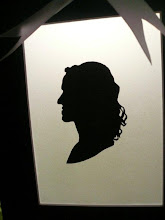


 I have been making these Ginkgo leaves for a while now. They are made of PMC (Precious Metal Clay). This is pulverized fine silver made into a clay-like substance. It has a higher silver content than Sterling Silver, which is 999, (meaning it is 99.9% pure) while Sterling is an alloy silver , containing 92.5% pure silver and 7.5% other metals, usually copper . It is stamped as 925.
I have been making these Ginkgo leaves for a while now. They are made of PMC (Precious Metal Clay). This is pulverized fine silver made into a clay-like substance. It has a higher silver content than Sterling Silver, which is 999, (meaning it is 99.9% pure) while Sterling is an alloy silver , containing 92.5% pure silver and 7.5% other metals, usually copper . It is stamped as 925.PMC is just as pliable as clay and therefore ideal for impressions of textures. I paint 15 - 20 layers of PMC slip onto the Ginkgo leaves. Once the PMC is bone dry I fire it in the kiln at around 1650 F. The extreme heat burns of the binding agent and compresses the silver molecules. The piece shrinks a little bit. Also the Ginkgo leaf burns away. What is left is its impression in silver. Since each jewelry piece is made from a real leaf and each leaf is unique, each pendant is different. The texture of the veins on the leaf are as individual as our finger prints. The Ginkgo tree is prehistoric and its leaves have medicinal qualities.


1 comment:
I love the Ginkgo leaf pendant! Where can I purchase one?
Post a Comment